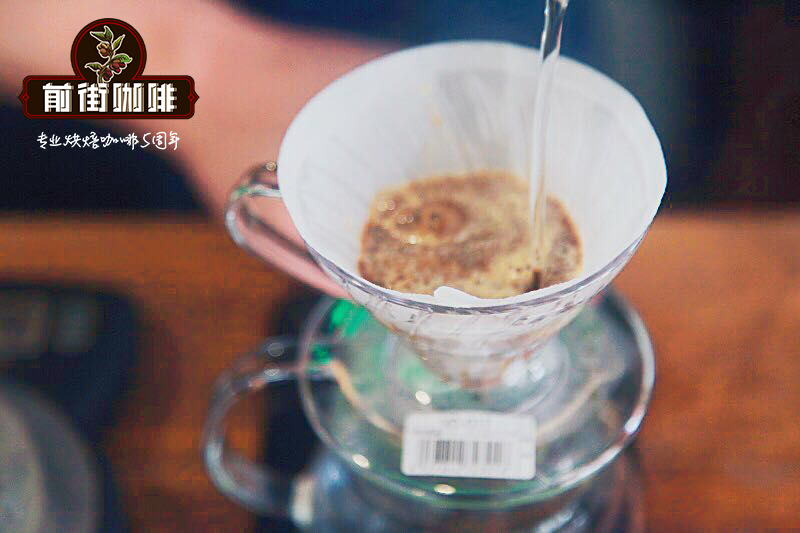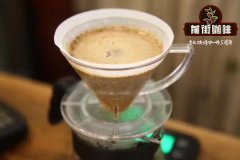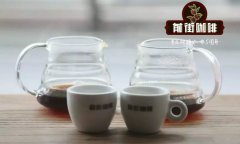What is the correct coffee cup test process? what are the rules and rules?

Professional coffee knowledge exchange More coffee bean information Please pay attention to coffee workshop (Weixin Official Accounts cafe_style)
Before coffee beans are sent to all parts of the world, they will be tested by the coffee farmers 'association or refining factory of the origin, that is, the aroma and taste of the beans will be confirmed by the test, and the flavor and taste of the coffee will be judged by the cup test, and the quality of a coffee will be identified.
The so-called "cup test" is like the selection of red wine to objectively and comprehensively judge the sweetness and sourness of coffee, bitterness, subsequent aftertaste and aroma, and quality.
The cup test is a very straightforward statement is the coffee cup test, of course, the test is not the material of the cup, but the quality of the coffee in the cup! Also because there is a cup test behavior, SCAA Fine Coffee Association promoted the cup tester certification corresponding to the birth, and "cup tester" is to check the quality of coffee beans, define coffee flavor and price, is the gatekeeper before entering the customer mouth.
What tools are needed for cup testing?
The tools needed for cupping are simple: bean grinder, electronic scale, thermometer, cupping cup, cupping spoon, paper towel.
The ratio of coffee beans to water is also regulated:
Water ratio: 8.25 grams of coffee beans with 150ml of water, water temperature 94 degrees
Cup test cup: tempered glass or ceramic materials should be used, we commonly use ceramic cup test cup
Cup capacity: between 207ml and 266ml,
Cup height: 3 to 3.5 inches
Cup diameter: 76 - 89 mm. All cups should be of the same volume, size and material, with lids.
Spoons for cup testing: Use antistatic metal materials (mostly stainless steel) with a capacity of 4-5ml per spoon.
cup test procedure
The first step: water injection, soaking, brewing and grinding coffee beans (preferably within 24 hours of beans baking), grinding coffee to a coarse powder, grinding coffee powder (particles) into a cup, shaking the coffee powder in the cup, smelling the dry fragrance of coffee, according to the ratio of 8.25 grams of powder to 150 ml of 94 degrees hot water in the cup, let coffee soak for 4 minutes until coffee residue shell is formed;
Step 2: Start timing when injecting water, smell wet fragrance after 2 minutes. Aroma is the intensity of the aroma when brewing coffee. Some subtle and delicate differences, such as the "floral" or "wine" characteristics, come from the wet aroma of brewing coffee.
Step 3: Break the residue, stir it three times on the surface of the cup with a spoon, skim the foam and residue shell, and you can start scooping coffee with a spoon to taste it;
Step 4: taste and sip, remove coffee scum with cup test spoon, suck coffee inlet, spit coffee liquid after feeling in mouth, record your feelings on cup test table, score according to the requirements of cup test table, gargle, rinse cup test spoon, and then taste the next coffee. We often use CoE scoring standards for cup test;
How to score on the cup meter?
CoE cup test table evaluation items and record key instructions, this description can let you in the cup test, there is a basic basis, at the same time in the test of a single evaluation item, can also be auxiliary reference:
At this time, the cup test has just started the first evaluation of dry/wet aroma (Flavor) project, there are a total of three aroma evaluation stages, the first stage is the cup test at the beginning of the dry aroma of the cup, the second is the wet aroma of the surface after water injection, the third aroma is the broken residue smell; aroma is coffee attractive elements, coffee aroma many sources, flowers, berries, caramel, nuts, chocolate, spices and so on.
Aromas on the CoE Cup scale are only included in the reference and are not included in the total score, but in the dry/wet aroma (Flavor) evaluation, aroma is not included in the score.
The first rating item: cleanliness (Clean cup)
Cleanliness is a very important and essential condition for quality products. Cleanliness means that there are no defects and blemishes. Coffee has rotten, earthy, medicinal iodine, fermented acid, rubber, onion, astringency and other bad tastes and touches, all indicating that it is not clean enough.
Second rating item: Sweetness
Sweetness not only means that coffee cherries are harvested at the best maturity period, without adulteration of immature beans, but also represents excellent coffee quality. Only by selecting freshly ripe coffee cherries to process into raw beans can we get better sweetness. There are also many kinds of sweetness, such as sugar cane sweet, caramel sweet, etc., which can be indicated when evaluating. If sweet will be astringent and sweet stays in the mouth for a short time, the sweetness score will not exceed 6 points.
Third scoring item: Acidity
Acid, good acid will not be like vinegar, even if bright and lively can also detect a variety of acids such as citrus, berries or sweet lemon, there are sweet sour melon like honeydew or crisp fruit acid of fresh apples. These acids are good; bad acids are like unripe fruit or acetic acid, and some bad acids are like overripe fruit or rotten fruit, when fermented acids or rotten acids can be detected.
The fourth rating item: Mouthfeel
Oral touch evaluation is not taste measurement, which belongs to the substance and touch felt by the mouth, grease feeling, viscosity, quality feeling, etc. all constitute mouth-feel; for example, milk and water, the former has a much higher touch, thick soup and clear soup, the former has a much higher consistency and touch than the latter.
The fifth evaluation is the very important sip: Flavor.
Sip flavors include all kinds of tastes and smells, and even aromas felt in the nose and mouth feel belong to this category; CoE cup test, because often a test of 8 samples, resulting in AROMA this item can not be measured immediately, so at the beginning of the aroma only with pleasure and unpleasantness to mark, but to sip wind for this evaluation item, cup tester can feel the aroma included in the evaluation item, including the test poured or drank a variety of flavors, so to say, sip flavor is a very important evaluation item, but also a basis for saying the characteristics of the cup test coffee sample.
Sixth evaluation: Aftertaste
After sipping, still stay in the mouth of various tastes or aromas or touch, good flavor stay for a long time, such as sweet feeling, after sipping coffee, still clear stay in the mouth or even scattered, the score of this item will be high, on the contrary, no aftertaste, or very short, the score will be low.
The seventh evaluation: Balance
Is the coffee balanced in terms of quality, e.g. acid is bright but still sweet? Sticky but not astringent? Coffee flavor harmony, this item will score high,
Item 8: Overall Evaluation
Coffee overall is excellent, attracts you? Or is it average, or do you not like it at all? This assessment is the overall assessment of the testee and can also reflect his personal preferences.
The significance of the total score after the cup evaluation, and the standard represented by the individual score:
(1) There are eight items on the scale. The highest score for each item is 8 points, the lowest score is 0 points, and the basic score is 36 points. Therefore, the total score is 100 points.
(2) 6 points represent that the project has reached the standard of CoE competition level, which belongs to good quality (fine). If it is completely unacceptable, it will be given 0 points (unacceptable). If the quality is ordinary, it will be given 4 points (Poor). If it is very excellent or even perfect, it will be given 8 points (great).
Reference level of the standard:
With a total score of 69 or less, commercial beans or industrial beans are slightly worse.
The total score is between 70 and 74 points, belonging to the general commercial beans.
The total score is between 75 and 79 points, which belongs to the superior commercial beans.
The total score is between 80 and 84 points, which belongs to fine coffee.
With a total score of 85 points or more, it belongs to the CoE competition level and is also the winner of the Cup of Excellence. It is currently recognized as the highest level in the international coffee industry.
How to judge SCA coffee cup test?
SCA coffee cup test, scoring ten items, of which the following two items are CoE did not:
Fragrance/Aroma: Aroma consists of two parts, dry and wet. The first image and the first item to be scored after grinding beans are dry aromas. Coffee flowers, roasted hazelnuts and roasted almonds are all pleasant aromas. Water injection, broken shell wet fragrance gives people more fantasy, honey, lemon, apricot fruit makes people salivate if thirsty.
Consistency: This score is relatively simple. Do the 5 cups taste different? Which cup has defects? It is necessary to determine whether it is a small defect (Taint) or a large defect (Fault). Small blemishes refer to bad odors, although obvious but not so severe as to be difficult to swallow. Generally, they refer to the defective smell of dry and wet coffee powder that has not been drunk.
Important Notice :
前街咖啡 FrontStreet Coffee has moved to new addredd:
FrontStreet Coffee Address: 315,Donghua East Road,GuangZhou
Tel:020 38364473
- Prev

Introduction of Uganda Coffee grading Uganda Manor and description of its Flavor characteristics
Uganda, located at the source of the Nile, is a landlocked country in Africa that does not rely on the sea. Although Uganda has a long history of producing coffee like other East African countries, the quality of coffee has never been improved because of the war caused by ethnic antagonism. Most of the good coffee is grown in areas adjacent to Kenya, and some good coffee beans are shipped to Kenya to be sold as Kenyan coffee until the war stopped 15 years ago.
- Next

Introduction of single-origin coffee in Honduras introduction to the grading standard of Honduran coffee beans
Professional coffee knowledge exchange more coffee bean information please follow the coffee workshop (Wechat official account cafe_style) Honduras was previously less well-known in the consumer market due to the lack of strong support in the handling and transportation of raw beans. In recent years, Honduras has actively changed and expanded its coffee industry, which has gradually opened up the knowledge of Honduran coffee in the international community.
Related
- Detailed explanation of Jadeite planting Land in Panamanian Jadeite Manor introduction to the grading system of Jadeite competitive bidding, Red bid, Green bid and Rose Summer
- Story of Coffee planting in Brenka region of Costa Rica Stonehenge Manor anaerobic heavy honey treatment of flavor mouth
- What's on the barrel of Blue Mountain Coffee beans?
- Can American coffee also pull flowers? How to use hot American style to pull out a good-looking pattern?
- Can you make a cold extract with coffee beans? What is the right proportion for cold-extracted coffee formula?
- Indonesian PWN Gold Mandrine Coffee Origin Features Flavor How to Chong? Mandolin coffee is American.
- A brief introduction to the flavor characteristics of Brazilian yellow bourbon coffee beans
- What is the effect of different water quality on the flavor of cold-extracted coffee? What kind of water is best for brewing coffee?
- Why do you think of Rose Summer whenever you mention Panamanian coffee?
- Introduction to the characteristics of authentic blue mountain coffee bean producing areas? What is the CIB Coffee Authority in Jamaica?

